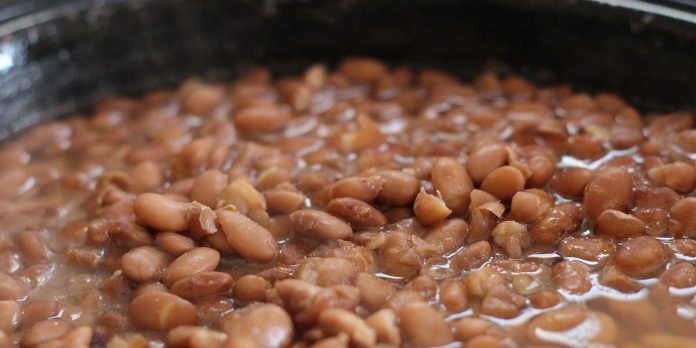White beans, such as navy beans and butter beans, are the best beans for long term storage. They only take 45 minutes of simmering to cook (compared to 60+ minutes for most other beans), which is important in emergency situations where fuel conservation matters.
The soft, creamy texture also means they are versatile and can be easily added to dishes like stews, sauces, and spreads.
However, all beans are good for long-term storage. When stored properly, most beans can last for 25+ years. Ideally, you will store multiple different types of beans, so you have a variety of foods to eat during emergencies.
Read:
Are Beans A Good Survival Food?
Beans are usually considered a good survival food because they have a very long shelf life. However, dry beans take a very long time to cook. Because of this, beans are only a good survival food if you also stockpile lots of water and have an emergency stove with lots of fuel.
Also read:
Bean Cooking Time
When choosing which beans to stockpile, you first need to consider cooking time. Even pre-soaked beans take a very long time to cook. This might not be an issue if you use a wood stove. However, if you have to cook beans during a power outage with your emergency stove, you will use a LOT of fuel.
Do you really want to waste an hour’s worth of fuel to cook beans? Keep in mind that you probably won’t be able to refrigerate the beans afterward, either. So, whatever beans you cook will have to be eaten almost immediately – that’s a lot of wasted fuel for one serving of food!
When it comes to cooking time, white beans are the best. Red and yellow lentils also are good choices because they cook very quickly.
| Bean/Legume Type | Simmer Time (minutes) |
|---|---|
| Azuki Beans | 45-55 |
| Anasazi Beans | 60 |
| Black Beans | 60-90 |
| Black-eyed Peas | 60 |
| Cannellini Beans | 60 |
| Fava Beans | 40-50 |
| Garbanzo/Chickpeas | 60-120 |
| Great Northern Beans | 45-60 |
| Green Split Peas | 45 |
| Yellow Split Peas | 60-90 |
| Green Peas, whole | 60-120 |
| Kidney Beans | 60 |
| Lentils | 45-60 |
| Lentils, red or yellow | 20-30 |
| Lima Beans/Butter Beans | 45-60 |
| Mung Beans | 60 |
| Navy Beans | 45-60 |
| Pinto Beans | 60-90 |
| Soybeans | 60-120 |
Bean Fat Content
Another thing to consider when storing beans long-term is their fat content. Even when stored in sealed containers with oxygen absorbers, fat still will start to go rancid over time (especially in hot temperatures). While eating rancid food won’t give you food poisoning, it definitely doesn’t taste good.
Luckily, most beans have very low fat. However, some beans – such as soybeans and chickpeas – have higher amounts of fat. If you live in a hot climate, you might want to avoid storing these beans for emergencies.
Price
All types of dry beans are generally very cheap, so they are good for building up an emergency food stockpile on a budget. If you really need to save money, then you will want to choose the cheapest beans.
At the time of writing, these were the cheapest beans and lentils:
- Pinto beans
- Black beans
- Brown lentils
- Navy beans
- Red beans
- Garbanzos/chickpeas
Also read: How Much Does Emergency Food Cost?
Bean Versatility
The final thing to consider when choosing which beans to stockpile for emergencies is how you will use them.
There are a surprising amount of things you can do with beans. White beans are generally considered the most versatile. They have a creamy texture, so can easily be turned into spreads, dips, and sauces and used in salads, as well as put in more traditional bean recipes like casseroles.
Soybeans are also incredibly versatile, especially because they can be used to make soymilk and tofu.
Note: As a general rule, you shouldn’t stockpile emergency foods you don’t eat in your everyday life. If you want to stockpile beans but don’t eat them regularly, then now would be a good time to learn some recipes.








